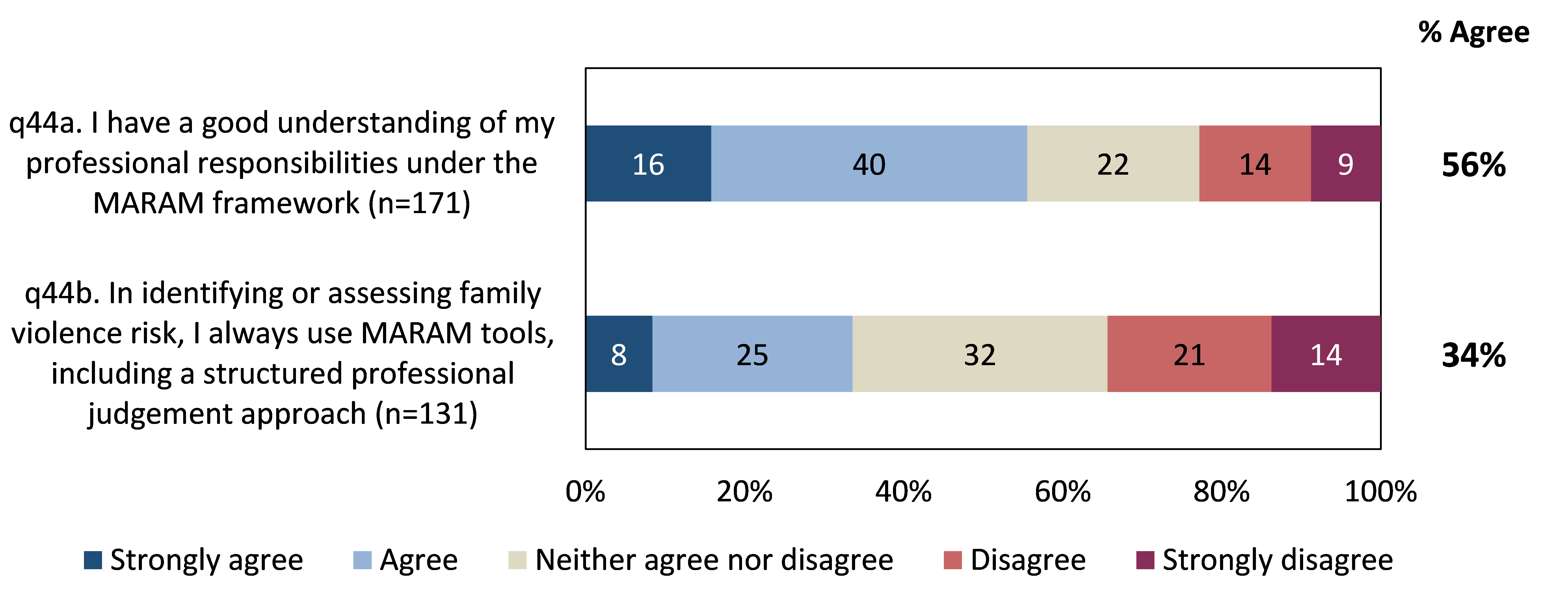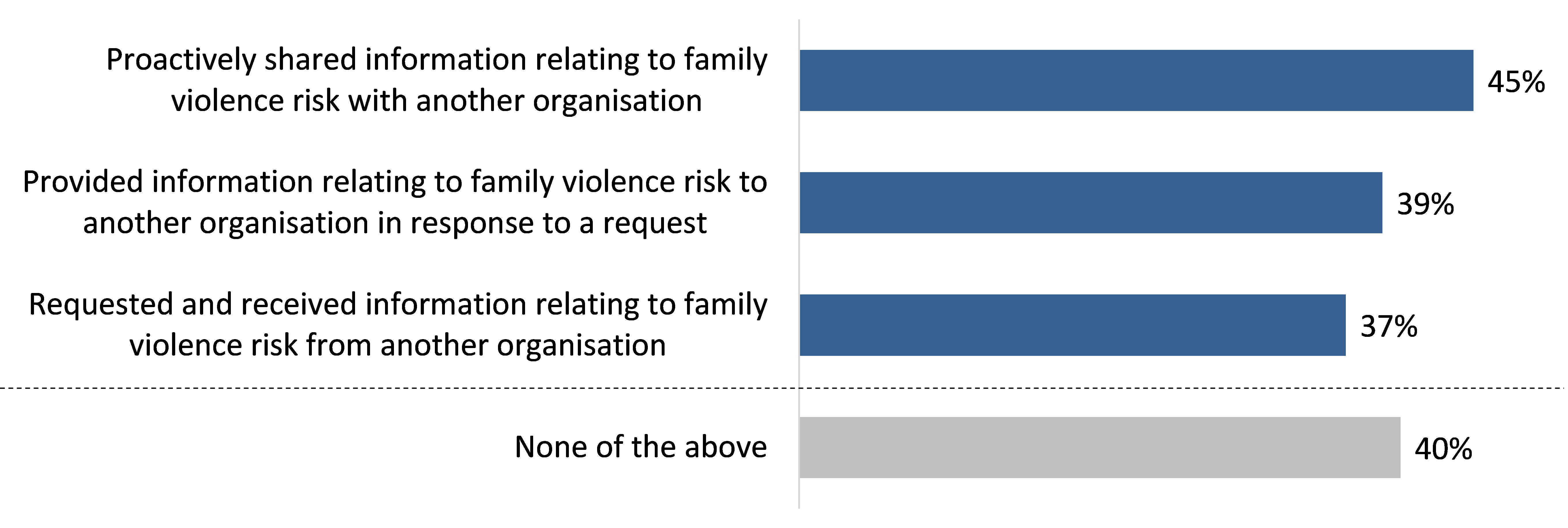The family violence Multi-Agency Risk Assessment and Management (MARAM) framework provides guidance to organisations prescribed under regulations that have responsibilities in assessing and managing family violence risk.1 The framework is designed to ensure services are effectively identifying, assessing and managing family violence risk. A range of organisations were prescribed under MARAM in September 2018.
- 79% of the primary prevention workforce indicated that they had heard of the MARAM framework2; and of these,
- 52% understood that the organisation that they currently worked for was prescribed to align with the MARAM framework.3
By organisation type, the proportion of respondents who understood that their organisation was prescribed under MARAM was:
- highest among those working in school education (70%), community organisations (68%) and community health (63%); and
- lowest among those employed in health promotion (21%) and women’s health (26%).
Of those who worked for organisations prescribed to align with the MARAM framework, in relation to identifying risk for victim survivors, understanding of one’s professional responsibilities under the framework was moderate (56%). Additionally, consistent usage of MARAM tools (including a structured professional judgement approach) in identifying or assessing family violence risk was relatively low (34%).

As outlined earlier, in primary prevention roles, employees may identify or receive disclosures of family violence.
- 53% of the primary prevention workforce reported that they had made a referral and / or shared information as a result of identifying or receiving a disclosure of family violence4; and of these,
- 60% felt that they had a ‘good’ or ‘very good’ understanding of their responsibilities to share information relating to family violence risk under relevant Information Sharing Schemes and privacy law.5
By organisation type, reported understanding of information sharing responsibilities was:
- highest among those employed in community organisations (74%); and
- lowest among those working in health promotion (33%) and policy, research and advocacy (35%) – these respondents were also more likely than others to report that they have never made a referral and/or shared information as a result of identifying or receiving a disclosure of family violence.
Figure 13 shows that conduct of information sharing activities under the Family Violence Information Sharing Scheme (FVISS) was moderate, with:
- the most common activity undertaken in the past year being the proactive sharing of information with another organisation (45%); and
- two-in-five indicating that they had not undertaken any information sharing activities under the FVISS in the past year (40%).
Footnotes
- Family Violence Multi Agency Risk Assessment and Management
- Q42. Before today, had you heard of the Multi-Agency Risk Assessment and Management (MARAM) framework? (n=474)
- Q43. Is the organisation that you work for in your current role prescribed to align with the Multi-Agency Risk Assessment and Management (MARAM) framework? (n=373)
- Q45. Have you ever made a referral and/or shared information as a result of identifying or receiving a disclosure of family violence? (n=467)
- Q46. Please rate your understanding of your responsibilities to share information relating to family violence risk under the Family Violence Information Sharing Scheme (FVISS), Child Information Sharing Scheme (CISS) and relevant privacy law. (n=210)
Updated
